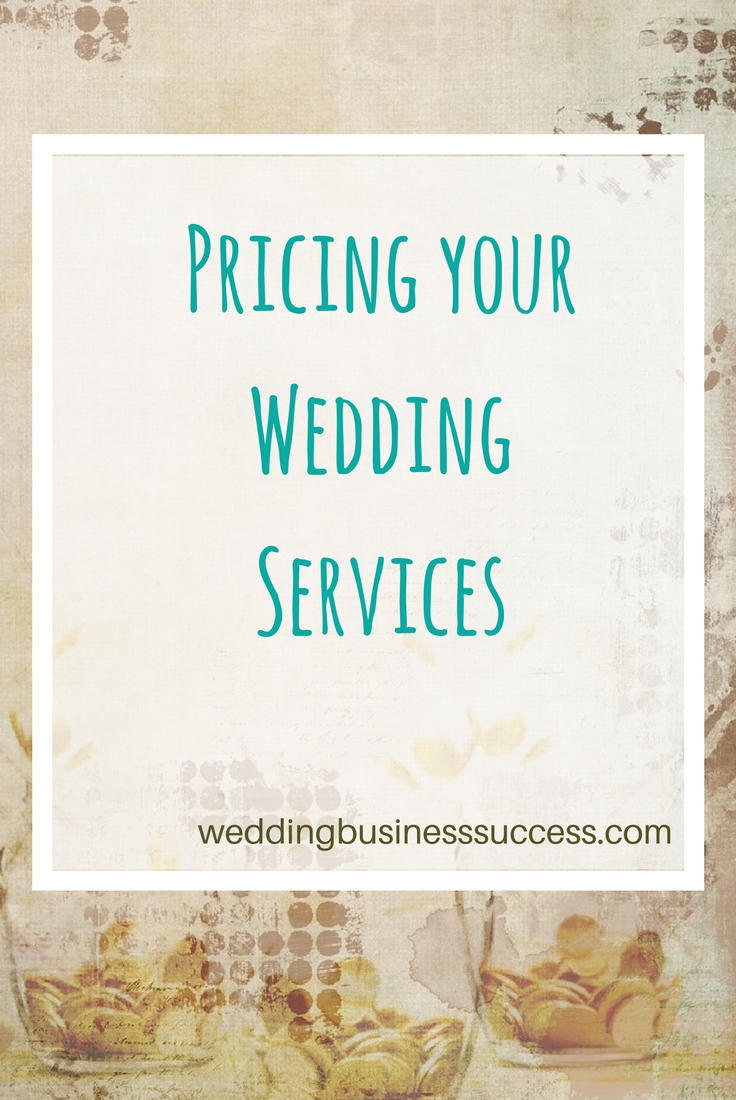Setting your prices is often the most tricky aspect of setting up a wedding business. Start too low and you will be very busy for very little reward. Too high and it will be hard to attract any clients. Either way you will struggle to build a viable business.
At the most basic level, there are 2 ways to set prices:
“Cost plus” and “market price”
But it’s rarely that simple and for most wedding businesses, the answer will be a mixture of the two.
Cost plus pricing
Take all your costs and add the profit you wish to make to give a price.
You will have the direct costs for each wedding (e.g. flowers if you are a florist), your overheads for running your business (advertising costs, rent, telephone) which need to be spread across all weddings and the cost of labour.
The latter is where many wedding businesses came unstuck. Most notably by undervaluing the time spent by the business owner.
If you employ staff it’s fairly straightforward. You know how much you pay your employees and can factor this in (remember to include taxes and other costs as well as salary). This will usually be an overhead unless you employ help on an “as needed” basis in which case treat it as a direct cost.
What about your own time? One way to approach this is by treating yourself like a salaried employee – take the amount you wish to earn and include it as an overhead.
Then any profit you make will be an extra. Here’s an example:
Let’s say you are a cake maker working full time from home with one assistant who works on average 10 hours per week at a cost of £10 per hour. You want to make a salary of £18,000 per year and expect to do 120 weddings.
Direct costs per cake: £45
Overheads (electricity, marketing etc): £2,500 per year
Labour: £5,200
Multiply the direct costs by the number of weddings (£5,400), add on your overheads and salary (£25,700) to give your total costs of £31,100. Divide by 120 to get the minimum price you need to charge per cake of £260.
Market Pricing
For the second, you look at what people will pay for your service.
Make a list of your competitors and note their prices. Look for those who are targeting similar types of brides – there’s no point comparing your luxury, bespoke cakes with those aimed at budget brides.
If yours is a new service or there is no direct competition, think about comparable services and look at typical bridal budgets in that area, e.g. venue styling, entertainment.
You then set your price based on the competition and estimated customer spend.
Deciding your prices
In reality doing both calculations will be required and will help you understand whether your business is likely to be profitable. If your “cost plus” pricing gives a value which is much more expensive than the market price you will need to examine your cost base.
If the reverse is true and the market price is higher than the cost plus price, then be cautious about going straight in with your lower prices. Brides are not always looking for the cheapest option and by undercutting all the competition you may give the impression of being lower quality.
And remember that, above all, couples are looking for value from their wedding suppliers. Communicate the benefits and quality of your service to ensure that price is not the deciding factor.




Great article! I especially like your closing comments regarding lower prices = lower quality. The value must be the determining factor – then price becomes irrelevant.